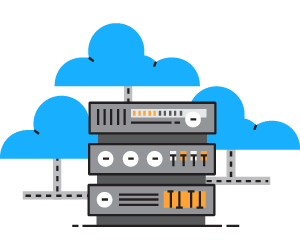Benefits of a Data Warehouse
Enhance business intelligence with effective strategic, tactical, and operational insights
DW contains a copy of analytical data that expedite decision making
The data cleansing promises the data quality before it is used for reporting
Integrate data from multiple data sources and make it accessible from one place.
Enable decision-makers and business users to have timely access to the data from different sources.
Stores large volumes of historical data which helps in analyzing different time periods and trends that aid in making future predictions
Restructures the data and deliver excellent query performance even for complex analytic queries without impacting the day-to-day transactions
Enterprise Data Warehouse
Data is harder to analyse when it is fragmented and stored in multiple areas. An enterprise data warehouse consolidates data from multiple sources, giving the right people access to the right information so that they can take necessary action. Rishik Vs Technologies experts will help to visualize, design & build the enterprise data warehouse (EDW) to act as a central repository of integrated data from one or more disparate source systems. In turn, this helps in reporting, data analysis and acts as a core component of business intelligence/analytics environment. Our team handles the end-to-end development and deployment of your data warehouse, making your access to information as efficient as possible and business ready.
The Rishik Vs Technologies advantage

Dimensional modelling
Using an abstract modelling layer based on mind maps, we define measures, dimensions, hierarchies, calculations and other attributes needed for a Data Warehouse setup. Our business data model is driven & designed from interactions with business users and we also conduct workshops with the various business units in our definition process.

DWH Staging
The DWH Staging Area is temporary location where data from source systems is copied. All required source data is made available before data is validated/ transformed/ transferred into the Data Warehouse. Thus having an staging area considerably reduces the risk of data loss at any point of time. Staging is designed to keep original copy of data for extended periods of time for archival or troubleshooting purposes.

Data Types & Mapping
Data mapping is used as a first step for a wide variety of data integration tasks including data transformation/ data mediation. We perform an analysis of the data in order to get an accurate account of the different types of data being stored in the data warehouse and the nature of the different sources being used. It includes identifications of attributes, size, datatype, allowed values and mapping between the source, staging & DWH model.

Extract, Transform and Load
The Extract-Transform-Load (ETL) software (e.g. Informatica, Cognos Data Manager etc) processes inconsistent data, cleanses "bad" data, filters data and loads data from source to staging to target database. Three phases are scheduled & executed in parallel using the scheduling tools like Opalis, Tidal etc.

Support
Our team performs regular maintenance and tuning of the warehouse using various checklists to be performed on daily/weekly/monthly basis. Design scripts for regular backups to be prepared for any unforeseen events which could occur.
Communication
Certifications

